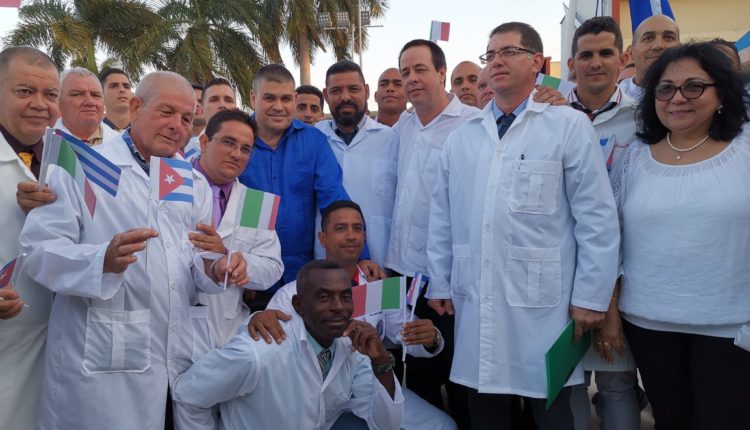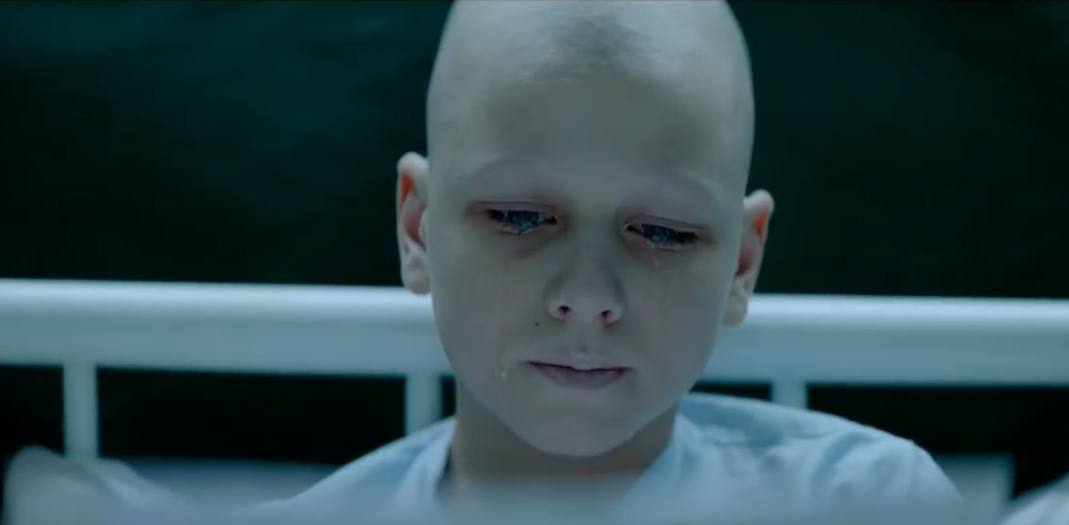Latin America
Related: About this forumCuba's coronavirus response is putting other countries to shame

By Jacobin Last updated Mar 25, 2020
By Ben Burgis / From Jacobin
Last week, the MS Braemar, a transatlantic cruise ship carrying 682 passengers from the United Kingdom, found itself momentarily stranded. Five of the cruise’s passengers had tested positive for the coronavirus. Several dozen more passengers and crew members were in isolation after exhibiting flu-like symptoms. The ship had been rebuffed from several ports of entry throughout the Caribbean. According to sources in the British government who spoke to CNN, the UK then reached out to both the United States and Cuba “to find a suitable port for the Braemar.”
Which country took them in? If you’ve paid attention to the Trump administration’s xenophobic rhetoric about “the Chinese virus” and its obsession with keeping foreign nationals out of the country, and you know anything about Cuba’s tradition of sending doctors to help with humanitarian crises all around the world, you should be able to guess the answer.
The Braemar docked in the Cuban port of Mariel last Wednesday. Passengers who were healthy enough to travel to their home countries were transported to the airport in Havana. Those who were too sick to fly were offered treatment at Cuban hospitals — even though there had only been ten confirmed cases in the whole country, and allowing patients from the cruise ship to stay threatened to increase the number.
Cuba Mobilizes Against the Virus
Despite being a poor country that often experiences shortages — a product of both the economy’s structural flaws and the effects of sixty years of economic embargo by its largest natural trading partner — Cuba was better positioned than most to deal with the coronavirus pandemic.
More:
https://progresoweekly.us/cubas-coronavirus-response-is-putting-other-countries-to-shame/
klook
(12,154 posts)You're telling me government-run healthcare™ can be beneficial?
On edit:
It's heartening to learn that Cuba is sending doctors to countries in need, including Italy.
Great article. Thanks for posting!
Judi Lynn
(160,527 posts)although it has been common knowledge all over the world outside the U.S. for years!
It's really a fascinating system which brought relief to many helpless victims:
Revolutionary care: Castro's doctors give hope to the children of Chernobyl
Young victims continue to receive treatment in Cuba two decades after Ukrainian nuclear disaster
First published on Thu 2 Jul 2009 13.51 EDT
Eleven-year-old Olga enters the beach house in flip-flops, her hair still wet from a dip in the Caribbean. "I really like it here," she says. "The food is great, the beach is awesome. I made some fantastic friends."
A typical child's reaction to a beach holiday, perhaps – only this is no ordinary seaside break. Olga is a Ukrainian "Chernobyl child", in Cuba not for a holiday but to undergo intensive medical treatment with some of the country's best doctors. She goes to school along with 180 other Ukrainian children. "I miss some bits of my home town," she muses. "But I don't ever want to leave."
Olga is one of more than 18,000 Ukrainian children to have been treated over the years at the Tarara facility near the Cuban capital, Havana. The programme was set up in 1990 to treat the victims of the world's most devastating nuclear accident four years earlier.
A steady procession of children with bald heads, skin lesions and other malformations have since benefited from splashing in the clear blue Caribbean waters. Twenty-three years after Chernobyl, the Cuban programme is still going strong. Remarkably, children born years after the disaster still suffer physical consequences of the meltdown that irradiated large parts of Ukraine and Belarus; equally remarkably, despite isolation and economic miasma, Cuba still manages to tend to them.
. . .
"Many people who are unaware of our ideals still wonder what Cuba might be after," Dr Julio Medina, general co-ordinator of the programme, recently told the Cuban newspaper Granma: "It is simple: we do not give what we have in excess; we share all that we have."
More:
https://www.theguardian.com/world/2009/jul/02/cuba-chernobyl-health-children
~ ~ ~
Cuba Marks 15 Years
Treating Chernobyl Victims
By Conner Gorry
When disaster strikes, the world is riveted. Who can forget Mt. St Helen’s spewing ash over Washington State or the thousands of corpses stacked like logs after the chemical plant catastrophe in Bhopal, India?
Unfortunately, once the immediate crisis is contained and the headlines shift to the next big story, world attention fades. This is precisely what happened after the nuclear accident in Chernobyl, now largely forgotten in many places. But not in Cuba, where over 18,000 children and young adults have been treated for a panoply of illnesses over the past 15 years.
Ukrainian Health Minister Nykola Efremovish Polischuk was in Cuba recently to commemorate the anniversary. In remarks delivered at a ceremony in Havana’s Teatro Nacional, he pointed out that the island nation is one of the few countries to have extended aid to Chernobyl’s victims. The ongoing and sustainable medical nature of this aid is what distinguishes the Cuban program and has led to broadened bilateral relations over the past 15 years.
The Explosion
On April 26, 1986, the central reactor at the nuclear plant in Chernobyl, Ukraine exploded and caught fire, killing dozens and inciting panic as plumes of radioactive smoke spread outward; the toxic fallout eventually killed thousands. Children were among the first to be evacuated in a massive exodus that saw 150,000 people abandoning their homes and workplaces; everything for a 30-km radius from the reactor was left behind in the evacuation, creating an instant ghost town.
Aid was swiftly dispatched in the disaster’s aftermath and many orphaned children found safety with adoptive parents in Spain, Italy, France and Germany; recreational programs and group vacations for affected children were also offered by various countries including Italy, Israel and Spain. But after a few years, the disastrous event in Chernobyl was eclipsed by other catastrophes, even though thousands were still - or becoming - sick.
More:
https://www.medicc.org/publications/medicc_review/0505/top-story.html
~ ~ ~

Chernobyl's wounds
Vitali and Alexander, Ukrainian children victims of the radiation produced after the explosion of the Chernobyl plant, play in the waters of the Caribbean next to the Pediatric Hospital of Taará, on the outskirts of Havana, Cuba. (REUTERS / Claudia Daut)
They simulated a power outage when reactor 4 power at the Chernobyl nuclear power plant tripped and the reactor core overheated. Hydrogen accumulated within it exploded, releasing a quantity of radioactive material 500 times greater than that of Hiroshima. 31 people died at the time and around 135,000 had to be evacuated immediately. Radiation then spread to most of Europe, but its death trail continues to this day with thousands of cases of cancer. In Belarus, Russia and Ukraine alone, the most serious nuclear accident in history could be responsible for an additional 200,000 deaths between 1990 and 2004, according to a report signed by 52 scientific researchers.

Ukrainian girls sick with cancer, during a meeting at the Pediatric Center of Taará. Between 1990 and 2010, more than 20,000 people from the former Soviet republics have passed through this hospital. (AFP / Adalberto Roque).

Cuba has treated thousands of Ukrainian children affected by skin problems, leukemia and other illnesses caused by the radiation generated after the explosion at the Chernobyl plant, years before they were born, free of charge. (REUTERS / Claudia Daut)
More:
https://www.rinconabstracto.com/2011/03/las-heridas-de-chernobyl.html
~ ~ ~

One academic’s emotional journey of awakening is told in the new film, Un Traductor
By Linda Pentz Gunter
Sitting crammed on a transatlantic flight, drinking weak coffee and picking at a lamentable apology for pasta is not where one would expect to find oneself watching a remarkable film about Chernobyl. But that is what happened recently.
Un Traductor (A Translator), released this year, tells the true story of a Cuban professor of Russian literature who, in 1989, abruptly finds his lessons canceled and a note on the university door directing him to the local hospital in Havana. There, he is told he must serve as a translator. But for whom? “The patients from Chernobyl” replies an emotionless senior nurse. The film is directed by Cuban brothers, Sebastián and Rodrigo Barriuso.
Malin (we never learn his last name until the credits) finds himself serving as interpreter at night on a children’s ward filled with victims from the 1986 Chernobyl nuclear disaster in Ukraine. At first, his only task is to inform parents that their child is fundamentally terminal. Devastated, he immediately wants out and to return to his comfortable home life with his wife and his own young son. “You chose to be a nurse!” he rails at Gladys, the matter-of-fact night nurse with whom he works and who has escaped the juntas of her native Argentina to work in Cuban’s renowned medical field. “I didn’t choose any of this,” he insists.
“These kids didn’t choose either,” she retorts.
https://beyondnuclearinternational.org/2019/04/28/chernobyl-children-in-a-havana-hospital/
~ ~ ~
I Heal: The Children of Chernobyl in Cuba Library Binding – September 1, 1996
by Trish Marx (Author), Dorita Beh-Eger (Author), & 1 more
https://www.amazon.com/I-Heal-Children-Chernobyl-Cuba/dp/0822548976
(Book still available through Amazon)

~ ~ ~

Cuba, Chernobyl, 25 years…a different angle…
March 9, 2011
Written by David White
I had a note back yesterday saying a pic I shot a good while ago (must have been , I shot it on Velvia) was going to be in the upcoming NCTJ photography exhibition at the Guardian newspaper. All well and good. that got me thinking though. The story I chased, about child victims of Chernobyl being treated for their ailments in Cuba, still resonates with me. I have seen recently quite a few photographers going to Chernobyl/Pripyat to coincide their work with the 25th anniversary of the disaster (April 26th, 1996).
Why not look for a different angle, and chase up the kids at Tarara? I don’t even know however if the facility at Tarara still exists. There was talk of turning the hospital and it’s accommodation into tourist villas or somesuch. If it is still there, or somewhere in Cuba, a story around it would be fascinating I think. Tarara is about 3/4 hours drive outside Havana, on the coast (duh). It is difficult to find, but you’ll manage it. There’s a story in there somewhere, whether the facility still exists or not.
Just a thought.
https://www.duckrabbit.info/blog/2011/03/cuba-chernobyl-25-years-a-different-angle/
~ ~ ~
https://s1.reutersmedia.net/resources/r/?m=02&d=20100324&t=2&i=80796265&w=&fh=810&fw=545&ll=&pl=&sq=&r=2010-03-24T003510Z_01_GM1E63O0LI201_RTRRPP_0_CUBA
Mittwoch, März 24, 2010
Ukrainian boy Pablo, 8, and his sister Olga, 2, victims of the 1986 nuclear power plant disaster in Chernobyl, are pictured at their temporary home at the Pediatric Hospital in Tarara, outside Havana March 23, 2010. For the past 20 years, Cuba has been providing free health treatment to around 24,000 child victims of the Chernobyl disaster in Ukraine. REUTERS/Desmond Boylan
~~ ~ ~
It's time to give Cuba the credit it deserves for its global medical accomplishments
Cuban doctors are known for their field experience and preventative medical practices
STEPHEN BARTLETT
JANUARY 10, 2017 4:32AM (UTC)
Many people will never hear about how at the end of 2016, 38 medical professionals from Cuba’s Henry Reeve Brigade returned home after more than two tireless months of treating Haitians. They were sent to lend support to Cuba’s permanent medical teams in Haiti in the wake of Hurricane Matthew.
Following the death of 90-year-old revolutionary Fidel Castro on Nov. 25, 2016 corporate media has been fixated on depicting Fidel as the mastermind of a two-dimensional “dictatorial regime.” For those with a three-dimensional perspective, however, Fidel Castro's death provides an opportunity to celebrate victories from the 56 years of the Cuban Revolution for which many people around the world are profoundly grateful and even owe their lives.
Reports from Haiti, Chernobyl, West Africa and many other places recount the extraordinary contributions of what some call Cuba’s “medical internationalism.” In 2014 there were 50,000 Cuban doctors and nurses working in 60 developing countries, according to the research of Canadian author John Kirk published in his book “Cuban medical internationalism has saved millions of lives.” But this unparalleled solidarity has barely registered in the western media.
“Good God, Cuba has done so much for Haiti!” said Ivon Rebelisa, a 46-year-old Haitian from Semillera, Artibonite department working on a farm as a day laborer in the Dominican Republic. “Several of my neighbors were treated successfully for cholera in [the city of] Gonaive by Cuban doctors. Others who didn’t make it to the Cuban clinic in time, my cousin and his wife, both died. The Cubans taught us how to avoid contagion, about frequently washing our hands, boiling or treating water, about not eating street food that had not been reheated enough.”
More:
https://www.salon.com/2017/01/09/its-time-to-give-cuba-the-credit-it-deserves-for-its-global-medical-accomplishments/
~ ~ ~
Havana Journal;A Haven for the Ailing Children From Chernobyl
By Mireya Navarro
Oct. 6, 1995
Occasionally the digitization process introduces transcription errors or other problems; we are continuing to work to improve these archived versions.
In a beach resort for the rich that is now largely vacant and overrun by tall grass, children from Ukraine and nearby areas are learning how to swim and to eat bananas while Cuban doctors treat their ailments -- hair loss, gastritis, leukemia, enlarged thyroid glands.
The children come from areas downwind from the Chernobyl nuclear power plant disaster in 1986, and to their families Cuba offers both a refuge and a hope for better health.
Known as Tarara, the seaside camp outside Havana is one of the last vestiges of Communist solidarity with the former Soviet Union. It had been used as a summer camp for Cuban schoolchildren, but it was devoted to children affected by the Chernobyl explosion after a Soviet call for international assistance after the accident.
The end of Soviet aid has cramped Cuba's largess as the country has struggled to find new sources of capital. The camp has more than 500 structures and originally was to serve 10,000 Chernobyl victims at a time, but the private Ukrainian group that pays the children's transportation is short of funds, and the program never had enough money to serve more than 2,000 children at one time. Its young patients now number 236.
But in five years, 13,500 Ukrainian children have come, the largest number offered services by any country, said Dr. Raciel Llanes, program coordinator.
Dr. Llanes estimated that it still costs Cuba more than $20 million a year to run the camp, which has a medical staff of 350. It is trying to cut expenses and to provide services to other groups, like tourists and other foreigners seeking medical services in Cuba. Even with its limited operations, the camp has shortages of food, clothes, school supplies and even medicine.
More:
https://www.nytimes.com/1995/10/06/world/havana-journal-a-haven-for-the-ailing-children-from-chernobyl.html
~ ~ ~
Sorry for the hastily slammed together information, didn't take enough time to make it orderly. The point is, once you know something has happened at all, then you can start trying to find out what has happened. In the case of the U.S. American public, we have always been kept TOTALLY in the dark concerning any group of people out of favor with the war machine in Washington, and all the twisted sociopaths who keep the hatred going!
Thanks for your comments.
klook
(12,154 posts)These accounts are very moving. The doctors and nurses of Cuba should get a collective Nobel Peace Prize.